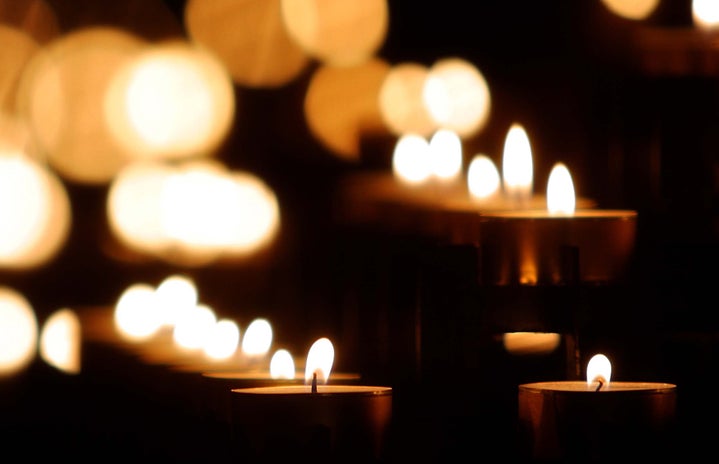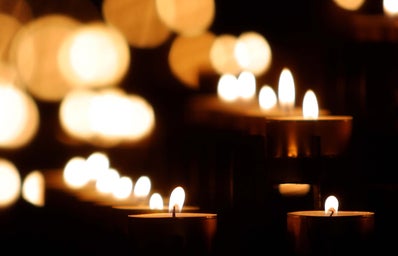My hometown of San Diego usually bursts with the vibrant orange of cempasúchil (marigolds) this time of year. The spiritual flower peppers the city’s streets, homes, and graveyards or areas that memorialize the dead. To me, my family’s own anticipation of Día de los Muertos (Day of the Dead) and the ofrendas (altars) we built each year felt just like every other holiday tradition. It was not until I got older, when I moved to study abroad in Scotland at the University of St Andrews, that I began to truly appreciate the holiday. While I have always been proud to be Mexican American, my pride grew even more once I settled into a foreign environment where meeting another Latino is as rare as finding a good corn tortilla (that is not hard shell) in the UK. Three years into my studies, I hope writing this article will impart this appreciation and pride towards this holiday and my heritage for not only those like me but also those open to learning about new cultures.
Día de los Muertos is a mixture between the indigenous traditions of Mexico as well as the Spanish and Catholic influence of All Soul’s Day. According to Aztec and Nahua beliefs, the deceased traveled to Chicunamictlán (Land of the Dead) and continued journeying until reaching the final resting place of Mictlán. It was for this journey that living family members were to provide food, water, and other items their ancestors needed. Today, in much the same way, families set up ofrendas with photos of their loved ones alongside their favorite foods and trinkets. Other items include: water, salt, cempasúchil, candles, Pan de Muerto (a traditional Mexican sweet bread in the shape of bones), sugar skulls, and crucifixes. Thus, the ofrenda is a deeply personal part of Día de Los Muertos.
The holiday spans from the end of October to the beginning of November, each day being designated for specific family members who have passed away. On their specific day, it is believed deceased loved ones can rejoin the living for 24 hours. The most known and celebrated days are 1 November (for children) and 2 November (for adults), however, even pets are unforsaken on 27 October. Unlike Western practices of mourning the dead, Día de Los Muertos is viewed as an opportunity to appreciate and celebrate life, family, and culture.
When speaking to fellow Mexican American students on campus, nostalgia towards the holiday’s vibrancy, good food, and time spent with family consistently came up in conversation. Secretary of the St Andrews Mexican Society Valerie Hernandez reminisced on “being able to build that altar with my mom and put love into it and into the household’s atmosphere.” The physical act of ‘putting’ love into not only the altar but into one’s home is an aspect of the holiday I believe we, as university students, can also resonate with.
No matter where we come from, university is a time spent establishing our own adult lives separate from our hometowns and families. Although exciting, this aspect of university life can be even more isolating for international students who – having to watch from afar – feel they miss out on the cultural traditions they grew up with. Valerie and I shared this feeling. She recalled, “The first year here, I didn’t celebrate [Día de los Muertos] as much as I wish I could’ve because I felt very isolated from my community and it was really hard, but last year and this year I have put in more of an effort to celebrate.”
At the same time, both the holiday and university life provides a chance to hold tight to the heritage we bring with us, form new traditions of our own, and share our culture with others in such a diverse student community. Valerie touched on this further, sharing, “I’m going to build it [the altar] myself and follow the same traditions as if I were with my mother, but now in a different context with people who are culturally different from me but still love and embrace me.” As a Mexican American myself, this holiday has become a beloved part of my student experience as a way to combat homesickness by celebrating my heritage and identity.
The St Andrews Mexican Society is a great place to start for fellow Mexicans and Mexican Americans who may feel estranged from their roots on campus. Anyone who is simply interested in Mexican culture is also certainly welcomed by the society! Valerie mentioned how surprised and appreciative she was by the turnout of their first event in September which garnered a staggering amount of interest from others outside of the Mexican community who were open to learning and embracing our culture. Thus, on 2 November, Valerie and the society hope to “bring both the Mexican and St. Andrews communities together” by hosting a Día de Los Muertos dinner: an elevated three-course Mexican-inspired meal at the The Bridge Restaurant located inside the Rusacks Hotel. They will also be hosting a LatinFlow afterparty at The Rule from 10pm-2am for those who want to keep celebrations going!
While everyone is certainly looking forward to the reggeatón, tequila, and spice the society has to offer, their goals run much deeper. Their remembrance of Día de los Muertos showcases how – as Valerie put it – “we may not be a lot, but the few that we are are very proud, and that is something we want to share across the student population.” I know for myself and many international students on campus, being in touch with one’s cultural heritage may feel daunting. However, by appreciating Día de los Muertos, I have learned that it is through intention – cooking your favorite foods from home, dancing to the music you grew up with, and practicing your cultural traditions – that can make studying abroad begin to feel more like a home away from home.


